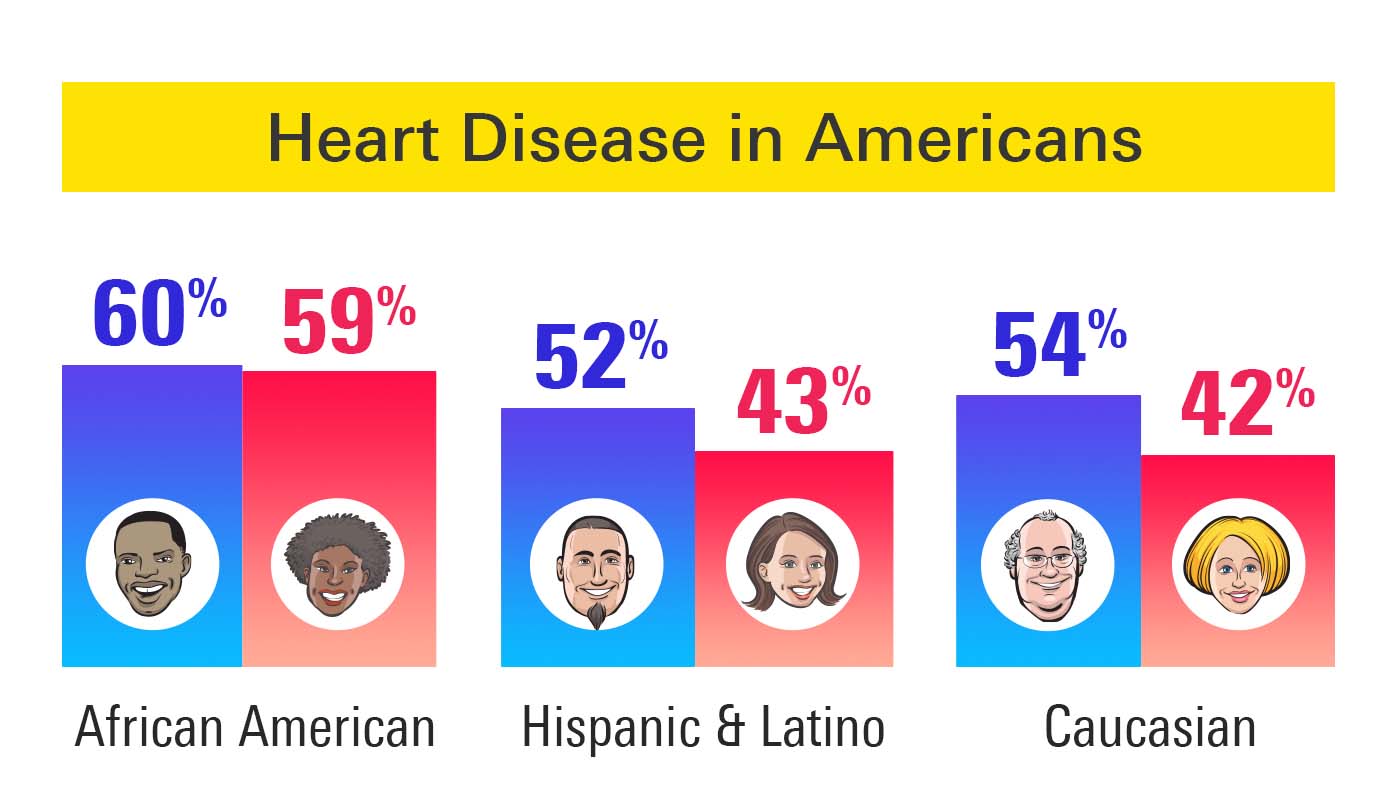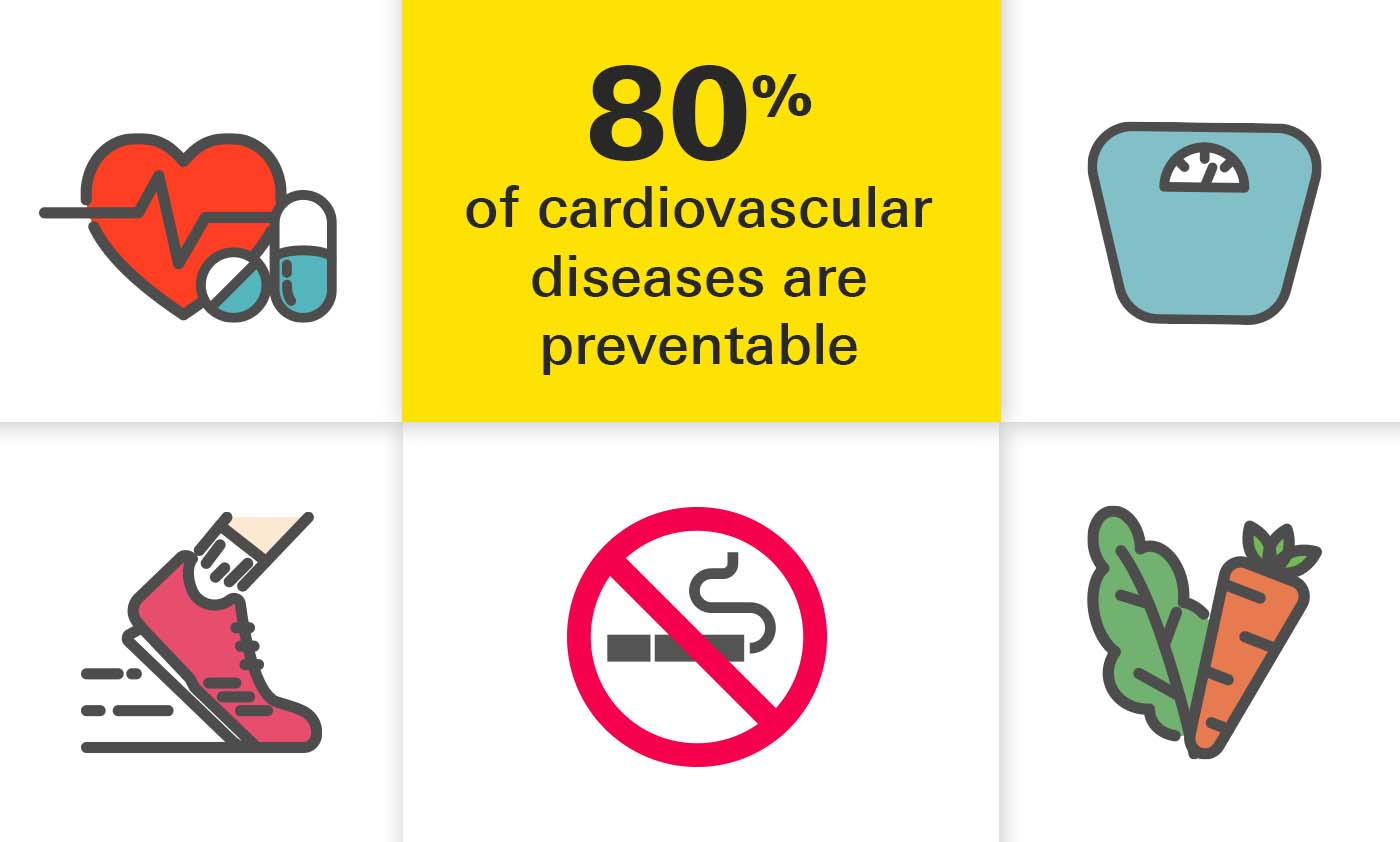3 Myths Debunked on Heart Disease
What is Heart Disease?
Our heart is an organ the size of a fist located in the center-left of the chest. It’s responsible for pumping our blood throughout our body.
As we age, we are at an increased risk of developing heart disease. Types of heart diseases include coronary artery and vascular disease (the most common type), heart rhythm disorders, structural heart diseases, heart failure, infections, enlarged muscle(s), and genetic disorders.
Many problems involving the heart are associated with a process known as atherosclerosis. According to the American Heart Association, atherosclerosis “is a condition that develops when a substance called plaque builds up in the walls of the arteries. This buildup narrows the arteries, making it harder for blood to flow through. If a blood clot forms, it can block the blood flow. This can cause a heart attack or stroke.”
The causes of heart diseases are complex and vast. Lifestyle related risk-factors include:
- Lack of exercise and sleep
- Smoking
- Poor diet
- Unhealthy levels of alcohol consumption
Other factors leading to heart disease:
- High blood pressure
- High cholesterol
- Diabetes
- Pre-eclampsia
- Sleep apnea
- Family history
Heart Disease in Women
The majority of studies were originally conducted in men, and as a result, our understanding of women’s heart health is limited; luckily this is changing. Despite misconceptions that heart disease is more prevalent in men, 80% of women ages 40 to 60 have one or more risk factors for coronary heart disease.
Further, women are at an increased risk of having heart disease if they have had premature menopause (before the age of 40) or have had pregnancy-associated conditions like pre-eclampsia.1
Heart Disease: A Serious Medical Condition
According to the Centre for Disease Control (CDC), “heart disease is the leading cause of death for men, women, and people of most racial and ethnic groups [in the US].”
Heart disease is not only the leading cause of deaths in the US but also worldwide and the second leading cause of disability right after neonatal conditions. Further, two people die every minute in the United States from cardiovascular disease (CVD).
The CDC also reports that “about 655,000 Americans die from heart disease each year” – that’s 25% of all deaths. To put it into perspective, Americans have a 1 in 6 chance of dying from heart disease, and 1 in 7 from cancer compared to 1 in 92 from an opioid overdose and 1 in 107 from a motor vehicle accident.

- 60.1% of African American males and 58.8% of females aged 20 years and older have some form of heart disease.
- Hispanics and Latinos had 52.3% of males and 42.7% of females in the same demographic.
- 53.6% of males and 42.1% of females belonging to the White race who had CVD.
The annual total cost of CVD in the United States was estimated at $351.2 billion in 2014-2015, with $213.8 billion in direct cost, including 46% for inpatient care.
Myth v/s Facts on Heart Disease
There are many misconceptions about heart diseases. Here are 3 common myths we often hear at Marley Drug:
“Taking medication means I can be lazy.”
Lack of physical activity and a poor diet is usually a bad idea, not only when it comes to heart disease. Medications like statins help lower low-density lipoprotein (LDL) cholesterol and stabilize plaque, but if you take a statin and continue a poor lifestyle the drug will not be as effective, and your cholesterol levels may even rise.
Remember: Maintaining a healthy lifestyle, no matter the medications you may be on should always be your top priority when it comes to your health.
“Only older people can have heart disease.”
While it is true heart disease and blood pressure statistically increase with age, this is by no means a chance to let your guards down. The CDC reports that in 2017, 1 in 5 deaths between the 25-64 demographic was due to heart disease.
Did you know heart disease can develop as early as childhood and present itself as suddenly as a heart attack, even a fatal one, so waiting till old age to take proactive steps for prevention and treatment should not be the case. That’s why you should always have regular checkups with your doctors to monitor for any warning signs.
“It runs in my family so it is out of my control and there is nothing I can do about it.”
Genetics is something you’re born with and cannot change. While being at a higher risk for heart disease, there are many actions one can take to drastically lower their risk of heart disease.
According to a 2020 report from the American Heart Association, nearly 80% of CVD can be prevented through not smoking, eating a healthy diet, engaging in physical activity, maintaining a healthy weight, and controlling your high blood pressure, diabetes, and elevated lipid/cholesterol levels.
Heart Disease: Diagnosis Prevention and Treatment are Key
Diagnosis, prevention, and treatment begin with knowing your risks, symptoms, and lifestyle. Consistent habits like eating healthy, being active, and having a smoke-free life have a big impact on your overall health and not just your heart. Even focusing on your mental health and reducing stress can go a long way in mitigating risk factors.

An estimated 80% of cardiovascular disease, which includes heart disease and stroke, are preventable2 by simply:
- Not smoking
- Eating a healthy diet
- Engaging in physical activity levels of alcohol consumption
- Maintaining a healthy weight
- Controlling high blood pressure, diabetes, and elevated lipids
If you are worried about any of the risk factors discussed in this article, be sure to talk to your healthcare team. Effective treatment plans other than a lifestyle modification are available like Aldosterone Inhibitors or Angiotensin II Receptor Blocker, used to lower your blood pressure, or statins, which are cholesterol-lowering drugs.
A healthy heart beats around 100,000 times a day, and it is our responsibility to make every beat count.